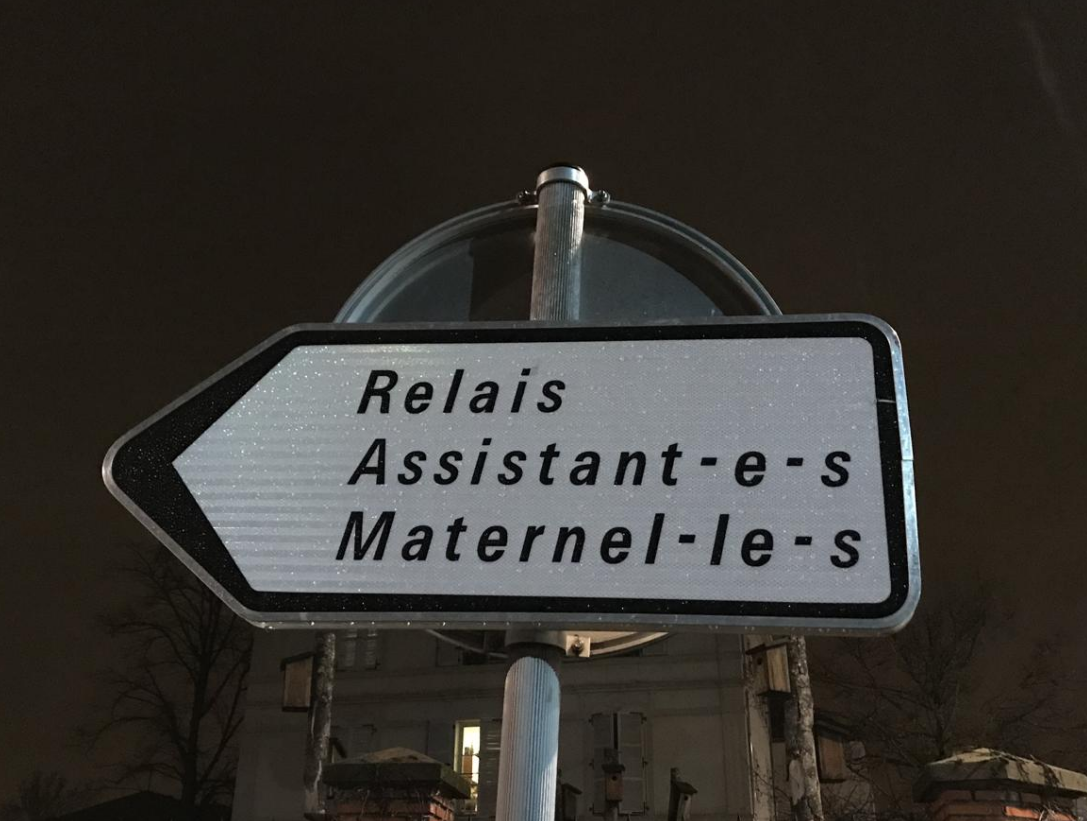
| Version | Summary | Created by | Modification | Content Size | Created at | Operation |
|---|---|---|---|---|---|---|
| 1 | Camila Xu | -- | 1267 | 2022-11-09 01:34:41 |
Video Upload Options
Gender fair language (GFL) is language used with the intention of reducing gender bias in one's mental representation, or mental understanding of an idea. Gender fair language includes gender-neutral (English singular they) and gender-inclusive language (English he or she). Feminization strategies of gender fair language use gender-inclusive language. Neutralization strategies of gender fair language use gender-neutral language. Some languages however are genderless rendering such strategies superfluous. Gender fair language focuses on grammatical gender, where gender is marked grammatically in the language. Gender fair language does not interact with gender noun classes, in which some languages categorize nouns. Gender fair language concerns grammatical gender marking on nouns that reference humans, where the gender marking is in accordance with the gender of the human. Gender marking occurs the most in gendered languages, like German, Spanish, and French, where all nouns are grammatically gendered. In these languages, gender fair language generally applies to nouns, pronouns, role nouns (e.g. German der Lehrer "teacher; m."), and possessive pronouns. Grammatical gender is also marked to a lesser extent in natural gender languages, like English and Swedish, in which animate referents are grammatically gendered according to their intrinsic gender. In these languages, gender fair language generally applies only to pronouns and possessive pronouns. Every language has its own method for grammatical gender marking, and thus gender fair language applies differently to each language to match its need.
1. Motivation

One's perceptual and cognitive experience of gender is tuned by the language of use. People are more aware and attentive to gender when using a language where gender is marked and less aware and attentive to gender when using a language where gender is not marked.[1] Gender bias inside language affects and interferes with gender bias outside of language. Countries where gendered languages are used have on average less gender equality whereas countries where natural gender languages are spoken have on average higher gender equality.[2] These and other reports made clear the need for reducing gender bias in language in order to reduce gender inequality.[3]
2. Feminization Forms
Feminization forms of gender fair language include both the male and female form via the gender binary system.
2.1. Pair Forms
Pair forms combine the male and female forms with a conjunction such as "and" or "or". Pair forms are available in all languages that mark gender on nouns. Pair forms are used with pronouns and possessive pronouns in natural gender languages, such as English he or she and his or her, and additionally in role and group nouns as in German Lehrer und Lehrerinnen "teachers; m. and teachers; f." and Vegetarier und Vegetarierinnen "vegetarians; m. and vegetarians; f."
| Language type | Language | Pronouns | Possessive Pronouns | Role Nouns | Group Nouns |
|---|---|---|---|---|---|
| Gendered | German | er oder sie
"he or she" |
sein oder ihrs
"his or hers" |
Lehrer und Lehrerinnen
"teachers; m. and teachers; f." |
Vegetarier und Vegetarierinnen
"vegetarians; m. and vegetarians; f." |
| Gendered | French | il ou elle
"he or she" |
N/A* | professeur et professeure
"teacher; m. and teacher; f." |
végétarien et végétarienne
"vegetarian; m. and vegetarian; f." |
| Natural Gender | English | he or she | his or her | uncommon** | uncommon** |
| Natural Gender | Swedish | hon och han
"he or she" |
hans eller hennes
"his or her" |
*French possessive pronouns take the gender of the possessed object.
**Some gendered role nouns persist in English (e.g. Waiter and waitress, actor and actress), but these forms are a minority of role nouns. Most role nouns in English have no grammatical gender marking (e.g. doctor, accountant, hairdresser).

2.2. Split Forms
Split forms are feminization forms that combine the male and female forms into one unit.[4] Some examples include: German Vegetarier/innen and French Végétarien/ne.
3. Neutralization Forms
Neutralization forms of gender fair language substitute a gender neutral form in place of a gendered form.
3.1. Generic Male
A generic male form (see Androcentrism for more) uses a grammatically male form to refer to someone or multiple people without intent to specify gender. Languages from various language families almost universally use the male form as the generic instead of the female form.[3] Some frequent examples in English appear in generalized sayings such as man and himself in Every man to himself. Generic male forms are also used for mixed-gender groups in gendered languages (e.g. French ils "they; pl.m." to refer to a group of men and women vs elles "they; f." to refer to a group of only women). However, these forms can also appear in reference to an individual when gender is not known or not relevant such as he in the conversation:
Person 1: "I was at the store yesterday and the person at the register said the funniest thing to me." Person 2: "Oh yeah? What did he say?"
Generic male forms can thus reference a male individual or a generic individual without intended gendering. Conversely, female forms only reference female individuals.[3] This causes male forms to be more dominant in speech and female forms to be more marked, i.e. hold more salient information.[4] Once having to choose whether the referent is male or female, linking the generic male form to a female referent over a male referent requires more input information to be sure of correct overt gendering. This leads to asymmetry of the generic male form to be male-biased.[4] Male-biased interpretation of the generic male form is seen even though the forms are intended to be gender unmarked.[5][6] This is true even when being reminded of the generic use of the male form.[7]
In natural gender languages like English, the male-bias of referents only affects pronouns as those are the only forms that require grammatical gender marking. Role nouns (e.g. server, hairdresser, and banker) do not have a gender bias from grammatical information, but rather a gender bias due to stereotyping of which gender is assumed to hold that profession.[7]
3.2. Existing Neutral Forms
Some referents already exist as gender neutral options in some languages. The availability of existing gender neutral forms in place of normally gendered referents depends on the language.
English singular they
English they is normally grammatically marked as plural but can also be used in the singular. Singular they has a history of use when the gender of a referent is unknown.

3.3. Novel Neutral Forms
Recently, some instances of new gender neutral pronouns, such as English ze and Swedish hen, were created.[8]
4. Suggestions for Use
Studies evidence that feminization strategies are helpful for increasing the mental representation of the unexpected gender and therefore help mitigate gender stereotypes.[4] In this way, feminization forms showed strengthened female associations compared to masculine forms only (GM).[4] However, feminization forms are awkward in spoken and informal language. Also, feminization forms inherently rely on a gender binary system. As neutralization strategies do not reference gender, they are suggested for any context that does not rely on gender information in order to minimize the role of gender in mental representations.[4] Specifically, neutralization strategies for natural gender language and a combination of neutralization and feminization strategies for gendered languages is called for.[3]
Generic male neutralization forms have been criticized since the 1970s as having persisting male bias.[3][9] However, one specific form, the Dutch masculine possessive pronoun zijn, shows results of no gender bias.[9]
Novel neutral forms show results of no gender bias[8] and linguists have suggested adopting a gender-neutral pronoun over generic he or double-forms (feminization strategy) since the 80s.[10]
References
- Chen, Jenn-Yeu; Su, Jui-Ju (2010-12-01). "Differential Sensitivity to the Gender of a Person by English and Chinese Speakers". Journal of Psycholinguistic Research 40 (3): 195–203. doi:10.1007/s10936-010-9164-9. ISSN 0090-6905. PMID 21120608. https://dx.doi.org/10.1007%2Fs10936-010-9164-9
- Prewitt-Freilino, Jennifer L.; Caswell, T. Andrew; Laakso, Emmi K. (2012). "The Gendering of Language: A Comparison of Gender Equality in Countries with Gendered, Natural Gender, and Genderless Languages". Sex Roles 66 (3–4): 268–281. doi:10.1007/s11199-011-0083-5. ISSN 0360-0025. https://dx.doi.org/10.1007%2Fs11199-011-0083-5
- Sczesny, Sabine; Formanowicz, Magda; Moser, Franziska (2016-02-02). "Can Gender-Fair Language Reduce Gender Stereotyping and Discrimination?". Frontiers in Psychology 7:25: 25. doi:10.3389/fpsyg.2016.00025. ISSN 1664-1078. PMID 26869947. http://www.pubmedcentral.nih.gov/articlerender.fcgi?tool=pmcentrez&artid=4735429
- Gabriel, Ute; Gygax, Pascal M.; Kuhn, Elisabeth A. (2018-07-19). "Neutralising linguistic sexism: Promising but cumbersome?". Group Processes & Intergroup Relations 21 (5): 844–858. doi:10.1177/1368430218771742. ISSN 1368-4302. https://dx.doi.org/10.1177%2F1368430218771742
- MILLER, MEGAN M.; JAMES, LORI E. (2009). "Is the generic pronoun he still comprehended as excluding women?". The American Journal of Psychology 122 (4): 483–496. ISSN 0002-9556. http://www.worldcat.org/issn/0002-9556
- Gabriel, Ute; Behne, Dawn M.; Gygax, Pascal M. (2017-05-17). "Speech vs. reading comprehension: an explorative study of gender representations in Norwegian". Journal of Cognitive Psychology 29 (7): 795–808. doi:10.1080/20445911.2017.1326923. ISSN 2044-5911. https://dx.doi.org/10.1080%2F20445911.2017.1326923
- GABRIEL, UTE; GYGAX, PASCAL (October 2008). "Can societal language amendments change gender representation? The case of Norway". Scandinavian Journal of Psychology 49 (5): 451–457. doi:10.1111/j.1467-9450.2008.00650.x. ISSN 0036-5564. https://dx.doi.org/10.1111%2Fj.1467-9450.2008.00650.x
- Lindqvist, Anna; Renström, Emma Aurora; Gustafsson Sendén, Marie (2018-10-16). "Reducing a Male Bias in Language? Establishing the Efficiency of Three Different Gender-Fair Language Strategies". Sex Roles 81 (1–2): 109–117. doi:10.1007/s11199-018-0974-9. ISSN 0360-0025. https://dx.doi.org/10.1007%2Fs11199-018-0974-9
- Redl, Theresa; Eerland, Anita; Sanders, Ted J. M. (2018-10-18). "The processing of the Dutch masculine generic zijn 'his' across stereotype contexts: An eye-tracking study". PLOS ONE 13 (10): e0205903. doi:10.1371/journal.pone.0205903. ISSN 1932-6203. PMID 30335820. Bibcode: 2018PLoSO..1305903R. https://dx.doi.org/10.1371%2Fjournal.pone.0205903
- Gustafsson Sendén, Marie; Bäck, Emma A.; Lindqvist, Anna (2015-07-01). "Introducing a gender-neutral pronoun in a natural gender language: the influence of time on attitudes and behavior". Frontiers in Psychology 6. doi:10.3389/fpsyg.2015.00893. ISSN 1664-1078. PMID 26191016. https://dx.doi.org/10.3389%2Ffpsyg.2015.00893




